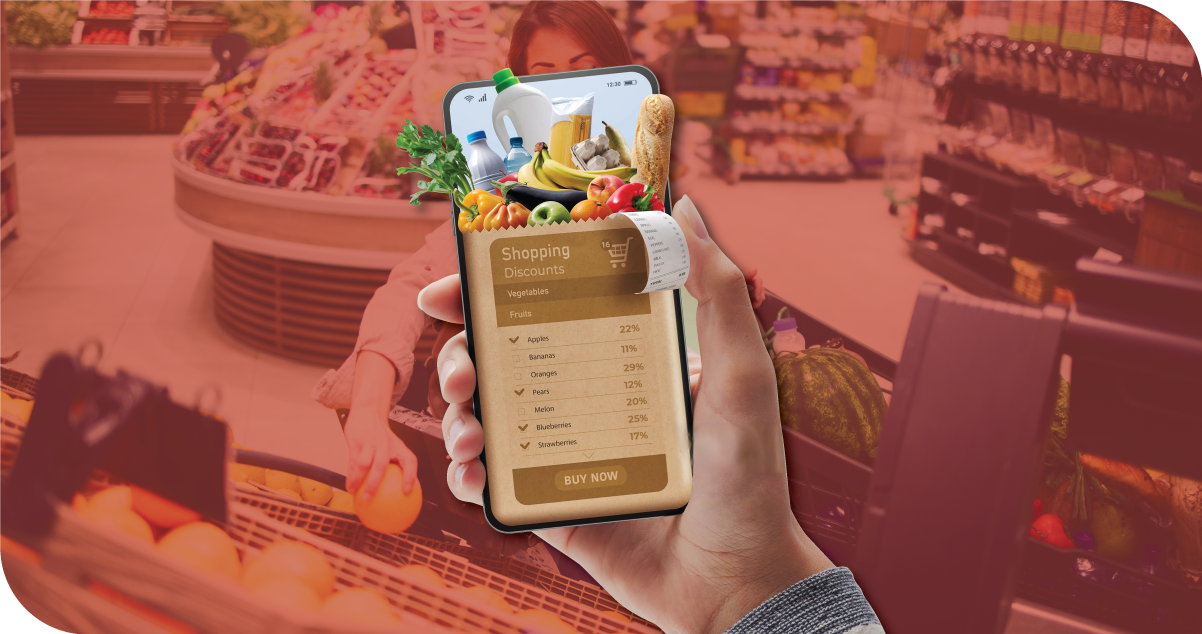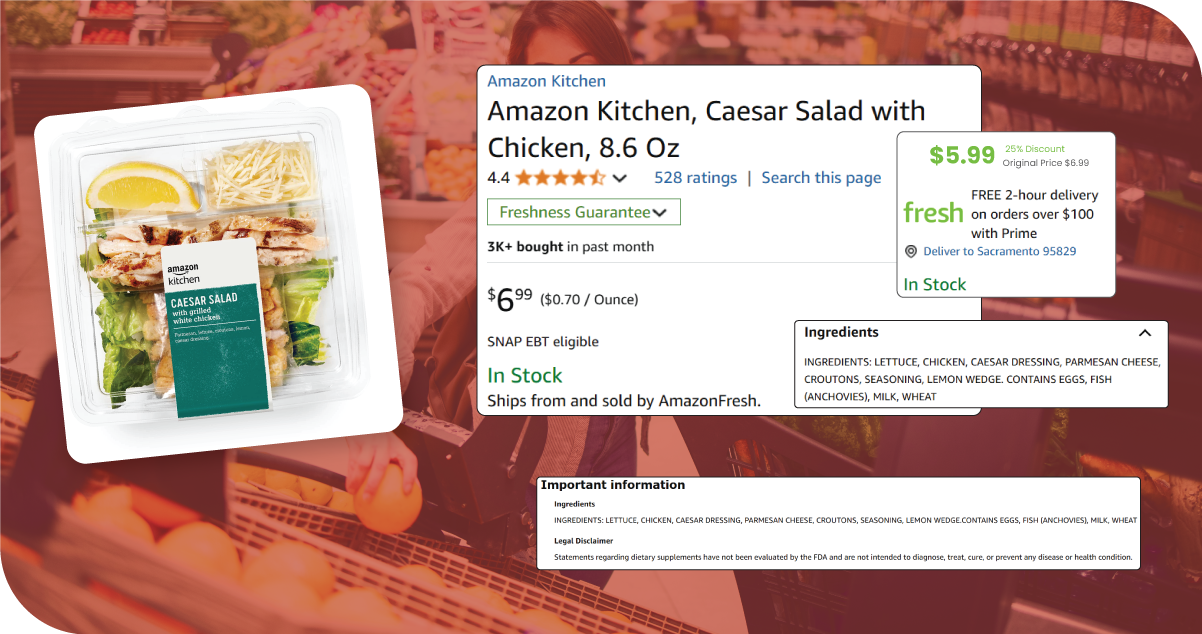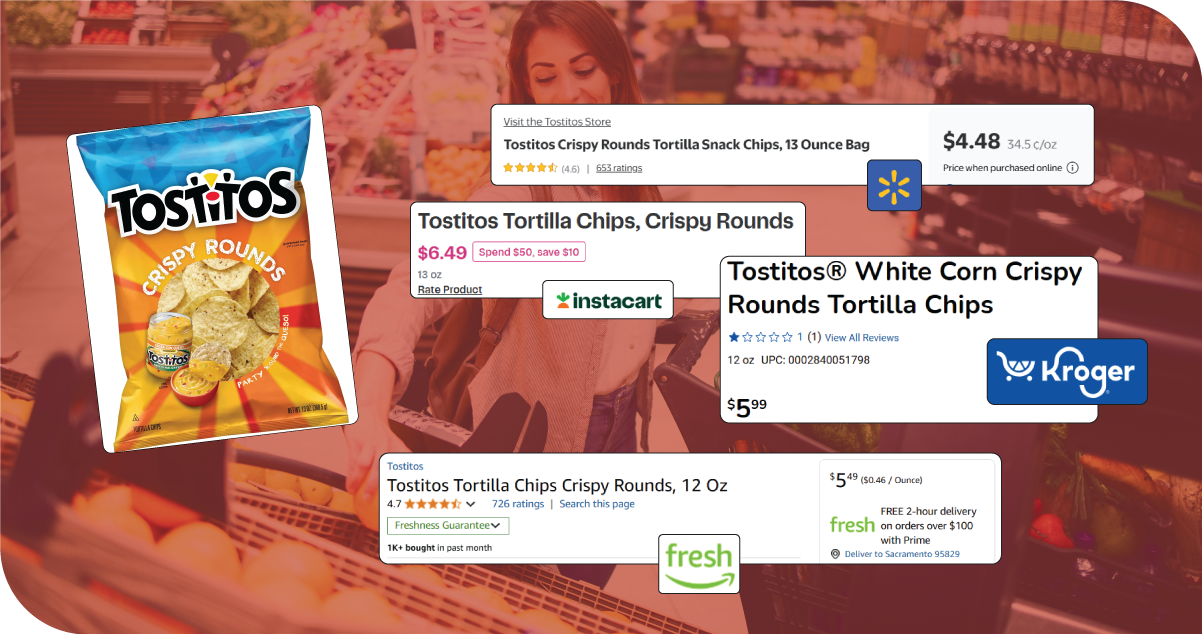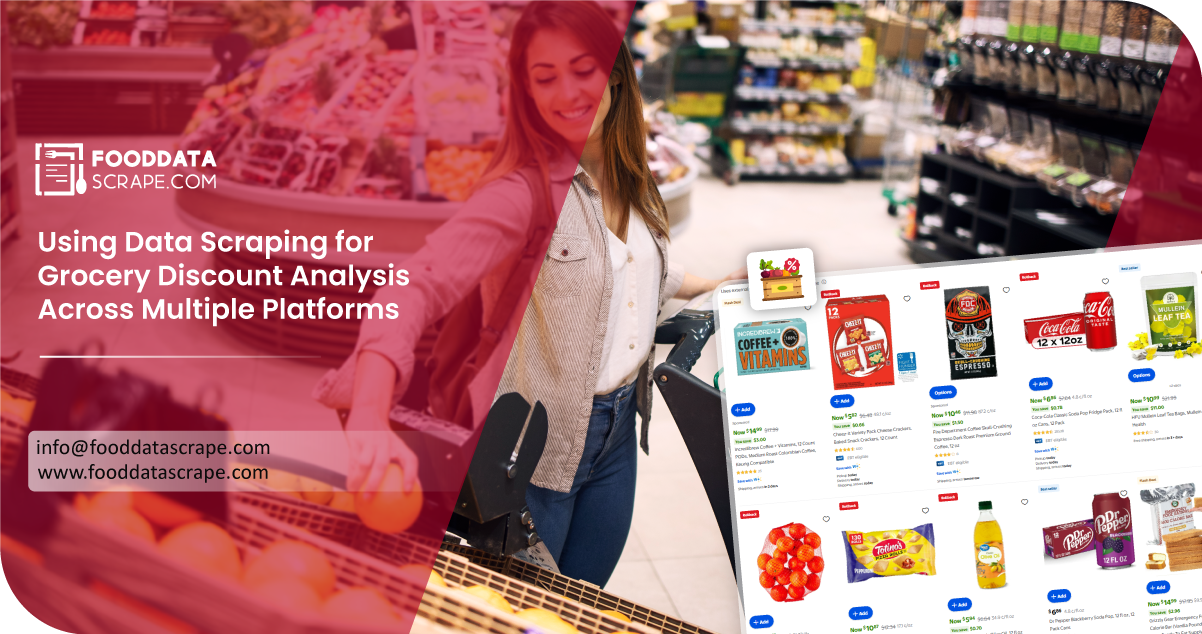The Need for Grocery Discount Analysis

Consumers are increasingly price-conscious, and grocery retailers adjust their pricing strategies frequently. Supermarkets, quick commerce platforms, and e-commerce grocery stores like Walmart, Amazon Fresh , Instacart , and Blinkit update discounts in real time. Businesses require accurate data to:
- Monitor competitor pricing
- Identify discount trends
- Optimize their pricing strategies
- Provide customers with the best deals
Manual tracking is inefficient, making automated data scraping the best solution.
Food Data Scrape’s Approach

Food Data Scrape utilizes advanced web scraping techniques to collect and analyze grocery discount data from multiple platforms. The company follows a structured process:
1. Targeted Data Extraction
Food Data Scrape extracts crucial discount-related data such as:
- Product name and category
- Original price and discount percentage
- Final price after discount
- Retailer/platform name
- Discount duration and trends
2. Real-Time Monitoring & Updates
With dynamic pricing strategies, real-time updates are essential. The company employs scheduled scraping techniques to ensure continuous monitoring, providing clients with up-to-date discount insights.
3. Data Cleaning & Structuring
Raw scraped data often contains inconsistencies. Food Data Scrape processes and structures the data, ensuring:
- Removal of duplicate entries
- Accurate discount calculations
- Proper categorization by product type and retailer
4. Competitor Price Benchmarking
By analyzing discounts across different platforms, businesses can compare their pricing against competitors, allowing them to adjust their strategies accordingly.
5. Custom Dashboards & API Integration
Clients receive structured insights through customized dashboards or API integration, making the data accessible for pricing optimization tools and business intelligence systems.
Case Study: Analyzing Discounts on Fresh Produce

Client: A leading grocery retailer in North America
Challenge: The retailer wanted to compare fresh produce discounts on major platforms to optimize their own pricing strategy.
Solution:
- Food Data Scrape extracted discount data from Walmart, Instacart, Amazon Fresh, and Kroger.
- The system updated pricing data every 6 hours.
- The client received a weekly discount trend report.
Results:
- The retailer identified seasonal discount trends, adjusting their pricing for maximum profitability.
- They improved their competitive positioning by offering better deals on high-demand products.
- Sales increased by 12% within the first three months.
Benefits of Grocery Discount Data Scraping

Using Food Data Scrape’s services, businesses gain:
- Competitive Insights: Understand discount strategies used by competitors.
- Optimized Pricing: Adjust pricing based on real-time data.
- Improved Customer Engagement: Offer better deals that attract more shoppers.
- Higher Profit Margins: Reduce losses by making data-driven pricing decisions.
Client’s Testimonial
"Extracting grocery data manually was a challenge for our team. Their automated grocery data scraping solution saved us countless hours while providing structured and up-to-date product information. The accuracy and reliability of the data have greatly improved our market analysis. "
—Head of Market Research
Conclusion
Food Data Scrape empowers businesses with real-time grocery discount data scraping , helping them stay competitive in a fast-evolving market. By leveraging structured discount data, businesses can optimize pricing, maximize revenue, and improve customer loyalty. Whether you're a grocery retailer, e-commerce platform, or price comparison website, data-driven discount analysis is the key to success in the modern grocery industry.



















































































